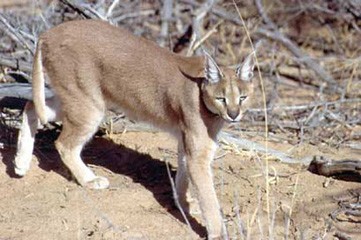
November 19, 2006

Local officials in Nashville, after viewing video (see update below) showing the mystery cat in Warner Park, has identified the felid as an African caracal (above) or an Eurasin lynx, according to the Tennessean. Not a cougar. There seems to be a bit more of a push to the caracal theory than any other.
However, perhaps the wildlife officials have come up with a bit more exotic explanation than they should have? As one comment at the newspaper site reveals:
I have viewed the video of the cat in Warner Park shown on Channel 4 TV news. It is definetly a Eurasian lynx and not an African Caracal. The caracal is quite a different looking cat and has a much larger tail than a lynx. This cat has a small tail which curls upward while a Caracal has a tail about a foot long which hangs downward. A caracal could not curl its tail upward if it tried. The ears are also quite distinctive of a lynx whereas caracal has larger ears with much longer ear tufts. The Eurasian lynx is not native to this area so it is obviously an escaped pet. While a caracal is not well suited to Tennesse winter weather, the lynx would find our winters mild. If it has not been declawed it should have little trouble hunting food in the park. While the Eurasian lynx is the largest of the lynxes and is capable of bringing down a deer, they are not at all aggresive to people so this cat poses no danger.
I must ask: Why not a Canadian lynx? Maybe it’s a rather large male tom bobcat?
I look forward to posting a captured image from the Nashville (cats) video here (which I am certain a helpful Cryptomundo correspondent will email soon), so I can make a more informed guess.
In the meantime, I want to thank Joan Woodward for sending along a message that there’s been a third reported sighting of a big mystery cat in the general Andrews AFB area outside of Washington, D.C., since April 27, 2006.
======UPDATE=======
The first two images below are from the video taken of the Tennessee Mystery Cat; the bottom two are of comparative photos of a captive caracal.
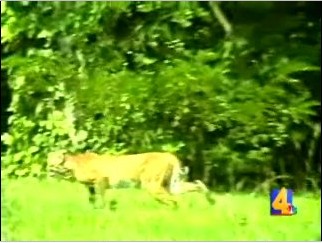
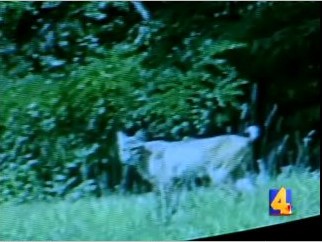
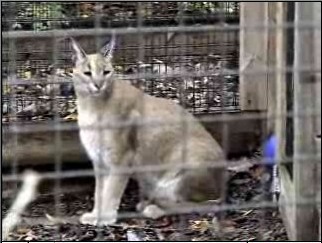
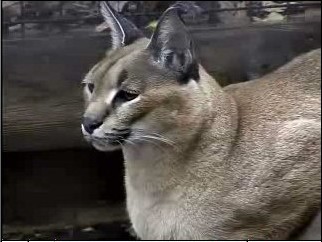
In general, lynx have a black tip on their tail and bobcat have black bands and spots on their body. However, the spotted fur on lynx and bobcat is infrequently rather plain in some specimens. Here is a photograph (below) of an Ohio bobcat. The state of Ohio is located just north of Tennessee.

About Loren Coleman
Loren Coleman is one of the world’s leading cryptozoologists, some say “the” leading living cryptozoologist. Certainly, he is acknowledged as the current living American researcher and writer who has most popularized cryptozoology in the late 20th and early 21st centuries.
Starting his fieldwork and investigations in 1960, after traveling and trekking extensively in pursuit of cryptozoological mysteries, Coleman began writing to share his experiences in 1969. An honorary member of Ivan T. Sanderson’s Society for the Investigation of the Unexplained in the 1970s, Coleman has been bestowed with similar honorary memberships of the North Idaho College Cryptozoology Club in 1983, and in subsequent years, that of the British Columbia Scientific Cryptozoology Club, CryptoSafari International, and other international organizations. He was also a Life Member and Benefactor of the International Society of Cryptozoology (now-defunct).
Loren Coleman’s daily blog, as a member of the Cryptomundo Team, served as an ongoing avenue of communication for the ever-growing body of cryptozoo news from 2005 through 2013. He returned as an infrequent contributor beginning Halloween week of 2015.
Coleman is the founder in 2003, and current director of the International Cryptozoology Museum in Portland, Maine.
Filed under Alien Big Cats, Breaking News, CryptoZoo News, Cryptozoology, Mystery Cats